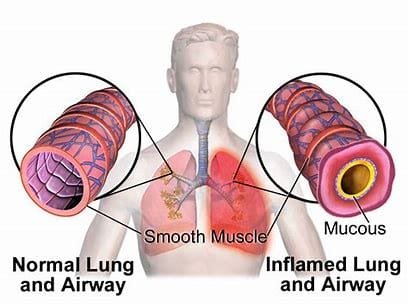Introduction
Acute bronchitis is an inflammation of the bronchial tubes or airways carrying air to and from the lungs. In essence, acute bronchitis refers to a bacterial infection of the respiratory tract, commonly presenting with a cough, which may include mucus, and can follow an attack of the common cold or influenza. In the management and recovery process, causes, symptoms, diagnosis, treatment, and prevention of acute bronchitis are very important.

Causes
The vast majority of acute bronchitis cases are caused by virus activity. These viruses are responsible for 85% to 95% of the causes of acute bronchitis. Other viruses include the following:
Influenza virus:
Typically seen during flu epidemics.
Rhinovirus:
Always responsible for the common cold.
RSV, or respiratory syncytial virus:
These children and older adults are a more susceptible population, particularly those that tend to have infections in the respiratory tract.
Coronaviruses:
Infections by the pathogens cause the common cold as well as COVID-19.
Other times, acute bronchitis might arise from viral infections. In such a case, the infection is from bacteria in immunocompromised patients. Other irritants that may contribute are:
Tobacco smoke:
This is the most common risk factor, especially in smokers.
Air pollutants:
This includes dust, chemical fumes, and other environmental toxins. Gastroesophageal reflux disease (GERD):
The acids of the stomach irritate the airways, thus contributing to bronchitis.
Symptoms
The main symptom of acute bronchitis is a persistent cough, possibly dry or with production of mucus.
Among the other frequent symptoms are:
the chest is painful. One feels the chest to be tight or sore.
Wheezing.
A high-pitched whistling sound when breathing.
Shortness of breath.
More apparent during physical exertion.
Fatigue.
Because of the body’s hard labor in combating the infection.
Fever.
Mild fever would be present with the illness, especially in viral infections.
Sore throat:
Often produces bronchitis because it might be due to an upper respiratory infection.
The symptoms last a few days to several weeks, and cough is the last symptom to persist.
Diagnosis
Acute bronchitis is often diagnosed by a history and physical exam. The physician would typically ask how the symptoms started and at what time frame they began, as well as any current health conditions. She or he will auscultate lung sounds, typically with a stethoscope, for abnormal conditions such as wheezes or crackles.
It can usually be diagnosed with only a history and physical examination. However, in certain situations, the doctor may desire to order additional tests, such as:
Chest X-ray: To rule out any cases of pneumonia or other pulmonary diseases.
Sputum test:
for detecting any presence of bacterial infection.
Pulmonary function tests:
The assessment of lung function is carried out, especially if there is an asthma or COPD suspicion.
Treatment
Most cases of acute bronchitis are self-limiting and spontaneously recover. Specific treatment is not required, but some forms of treatment for symptomatic relief can be used as follows:

Rest:
The body is given a chance to recover.
Hydration:
Ensure adequate fluid intake to loosen mucus.
Pharmacologic interventions: These are:
Antitussives:
The medication for coughs that acts specifically to ease dry, hacking coughs.
Expectants:
Medication that assists in loosening mucus.
Pain relievers:
Potassium or ibuprofen to reduce fever or pain.
For individuals with suspected bacterial infections, antibiotics will be prescribed by a health provider, which happens rarely. For people with chronic respiratory disease, bronchodilators might be used to dilate their airways and improve breathing.
Complications
Acute bronchitis is usually self-limiting but can complicate serious conditions, especially in at-risk groups like children aged below six years, old people, and those suffering from chronic respiratory diseases. Acute bronchitis complications include:
Pneumonia: A more dangerous lung infection results from bacterial bronchitis.
Chronic bronchitis: Infection may lead to chronic bronchitis if attacks become recurrent, especially among smokers.
Prevention
Prevention of acute bronchitis will be achieved by minimizing the exposure to the risk factors and by maintaining proper respiratory health. Main prevention measures include:
Avoid smoking: Quitting and avoiding passive smoking.
Good hand hygiene: Washing hands frequently reduces the transmission of viruses.
Vaccinations:
Flu and pneumonia vaccinations for adequate vaccinations.
Averters of irritants:
Reduces exposure to harmful pollutants, chemical fumes, allergens, and so on.
Maintenance of chronic conditions:
Properly managing asthma, GERD, and many such conditions reduces the tendency towards bronchitis.
Conclusion:

Acute bronchitis is a common respiratory disorder and can be treated with proper care and lifestyle modification. Therefore, knowledge of causes, symptoms, and the range of treatment may help in getting proper attention without delay or complexities. There are preventive measures that may be taken to protect people from suffering with this condition and promote good respiratory health. If there is prolongation of these symptoms or increase, a medical consultation is necessary to further assess and manage the state.



